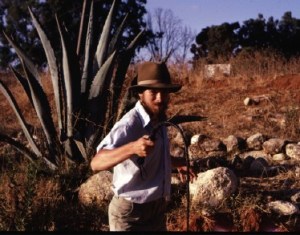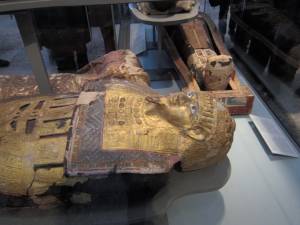Indiana Jones and the Dial of Destiny didn’t do well in theaters. I’m afraid that Indy fans, like Harrison Ford, may be aging out. Although anthropologists are loathe to admit it, Indiana Jones was a boon for archaeology. He made it cool, back in the eighties. We’re four decades older now and for some of my generations, Indy’s still a draw. The energy of Raiders and Final Crusade, however, has dissipated a bit. I don’t watch trailers, so I learned that the eponymous Dial of Destiny was the Antikythera mechanism, curiously called “the Antikythera” in the film. Or Archimedes’ Dial. The film starts off with a religious artifact, the lance of Longinus, but it’s a fake. The Dial, however, is real, if broken. In order to make the Indy magic work they had to make a remarkable scientific device into something occult.
While I watched I thought about how the move away from religious artifacts into secular is a sign of our times. The original trilogy involved Christian and Hindu symbols. (It was only a couple years back that I realized Temple of Doom was set before Raiders, when Ford was young enough to pull that off.) Crystal Skull was a mix of religious and secular. We don’t know, historically, what the crystal skulls were for, but clearly they could have had religious significance. The film spun them all widdershins into paranormal playthings. The Dial, as it’s called, has no religious implications at all in the current film. The 1960s Nazis want to travel back in time, which is what the Antikythera, we’re told, predicts (letting interested parties know the time and place of time fissures). A Hitler wannabe plans to do World War II right, so that Germany wins. They end back at Archimedes’ time, however, and the world is saved.
As I’ve noted with other pop culture franchises, when a series begins with a religion plot and then drops it, things start to unravel. I suspect many screenwriters and directors underestimate the power of religion for generating compelling stories. Belief changes things. Dial of Destiny demonstrates that substitutes really don’t engage viewers to the same level. This is a perfectly serviceable Indiana Jones movie. Lots of adventure and PG 13-level violence. Getting the girl may not have the same urgency with an octogenarian archaeologist, and Helena seems undecided what she wants, in any case. What’s really missing, however, is the pizazz that religion brings to stories of finding ancient artifacts. Archaeology, embarrassingly for some, began in West Asia for religious reasons. Acknowledging that is simply staying true to history.




